
The Bare Necessities: A Beginners Guide to Disney Lorcana
In this captivating fusion of two beloved worlds, the Disney Lorcana Trading Card Game invites you to embark on a journey through the realms of imagination. Here, iconic Disney heroes, villains, and allies converge in a symphony of strategy, skill, and wonder.
Whether you’re a seasoned TCG player or Disney fanatic, Lorcana offers an immersive and enjoyable experience for all. Developed and published by Ravensburger, Disney Lorcana is the newest in their lineup of over eight-thousand games and the stage is set for this to be their most popular yet. In this game, you’ll explore a universe where your favorite characters come to life, each with their own abilities and tactics.
Today, we’ll cover the bare necessities required to get you started on your journey towards being the greatest lore seeker there is!
Disney Lorcana Game Objective
Your goal in Lorcana is to be the first to reach twenty Lore points, and to do so, you’ll employ some of your favorite friends from the Disney universe to fight for you on your journey. On their turns, players may place a single card into their Inkwell. This growing pool of ink will be used as the resource to play out various Disney characters, Actions, and Items.
As with any TCG, there are different play styles that lend themselves to your personal preference and help you enjoy the game. Let’s start by discovering what each ink color has to offer and what part they may play in your overall strategy.
Ink Colors and Their Strengths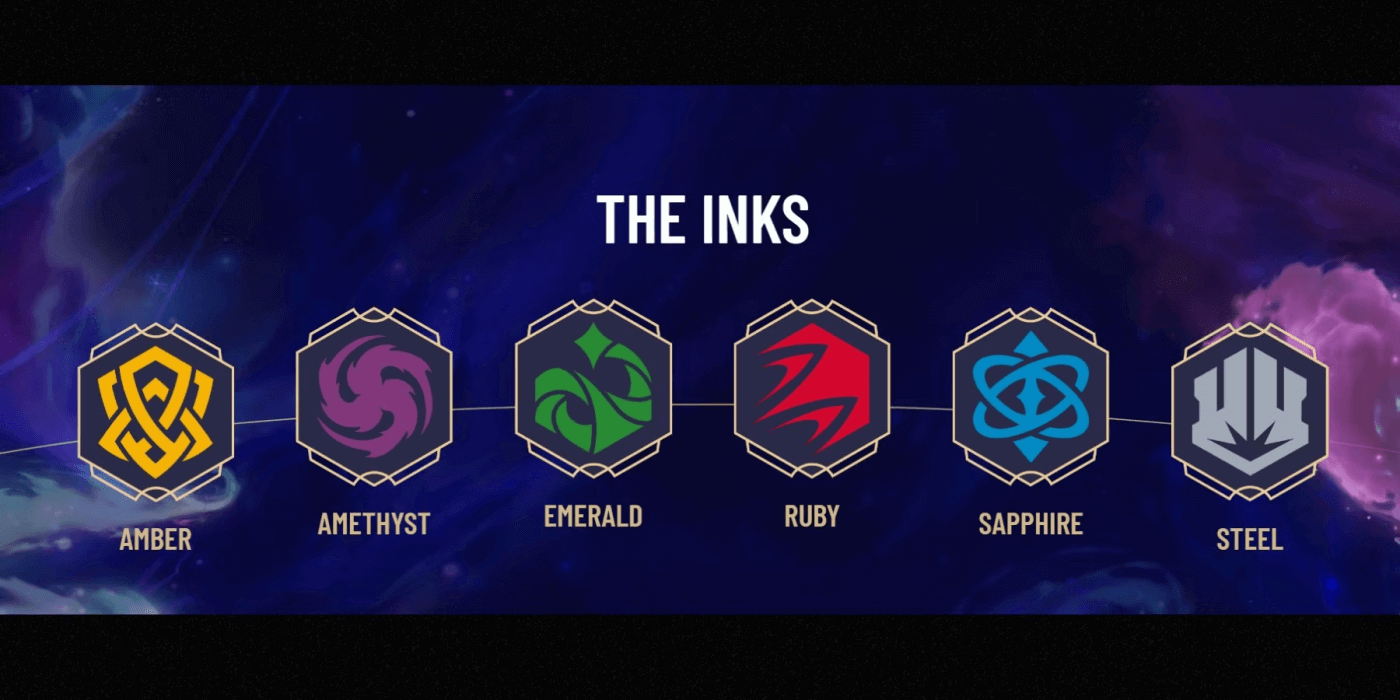
When building a Lorcana deck, the first thing a player must do is choose one or two ink colors. At this time, there are six different colors to choose from, each offering its unique strategy to the player.
Amber: Known as supporters or healers, many cards in the Amber ink category offer ways to heal your other characters. As characters receive damage counters, healing them is the best way to ensure they stick around for the long haul.
Amethyst: This ink color allows wielders to take advantage of the magical side of the game. Abilities such as card draw, card recursion, and cost reduction are just a few ways players can take advantage of this ink color.
Emerald: If you like to punish your opponent by forcing them to discard or return cards to their hands, this is the ink color for you. Known as quick adaptors, the characters in Emerald are sure to help you maintain your threat level throughout the game.
Ruby: Many of the characters in this color offer the player the opportunity to remove their opponent's hard-earned Lore. Ruby also takes advantage of their large selection of aggressive characters with Evasive, a keyword that prevents them from being attacked by any other character without that same keyword.
Sapphire: If you want resources at your disposal, this is the color for you. Mainly focused on ramping up cards into your Inkwell, many Sapphire cards allow the player to break the “one card in your Inkwell per turn” rule. The Inkwell is where you store your resources, which are used to pay for actions and playing characters. This is especially helpful for playing out your high-cost cards earlier in the game.
Steel: As the name may suggest, characters in this color are all about strength. When not seeking Lore, players may choose to have their characters engage in battle with their opponent's character. Steel characters tend to have some of the hardest-hitting and highest defensive values in the game, but be prepared to pay slightly more Ink to pull off such aggressive feats.
Similar to Magic: The Gathering, a key component to constructing a cohesive deck is ensuring that you choose two Ink colors that compliment and encourage your overall strategy and preferred playstyle.
Now that we’ve covered the basics of Ink colors, let’s cover the different types of cards available in Disney Lorcana.
Card Types
Characters: As mentioned, we’ll be utilizing our beloved animated favorites to gain Lore and Challenge other characters. Each turn, a character can either Quest and gain the Lore points equal to what is indicated on the card or attack another player's character, but rarely both.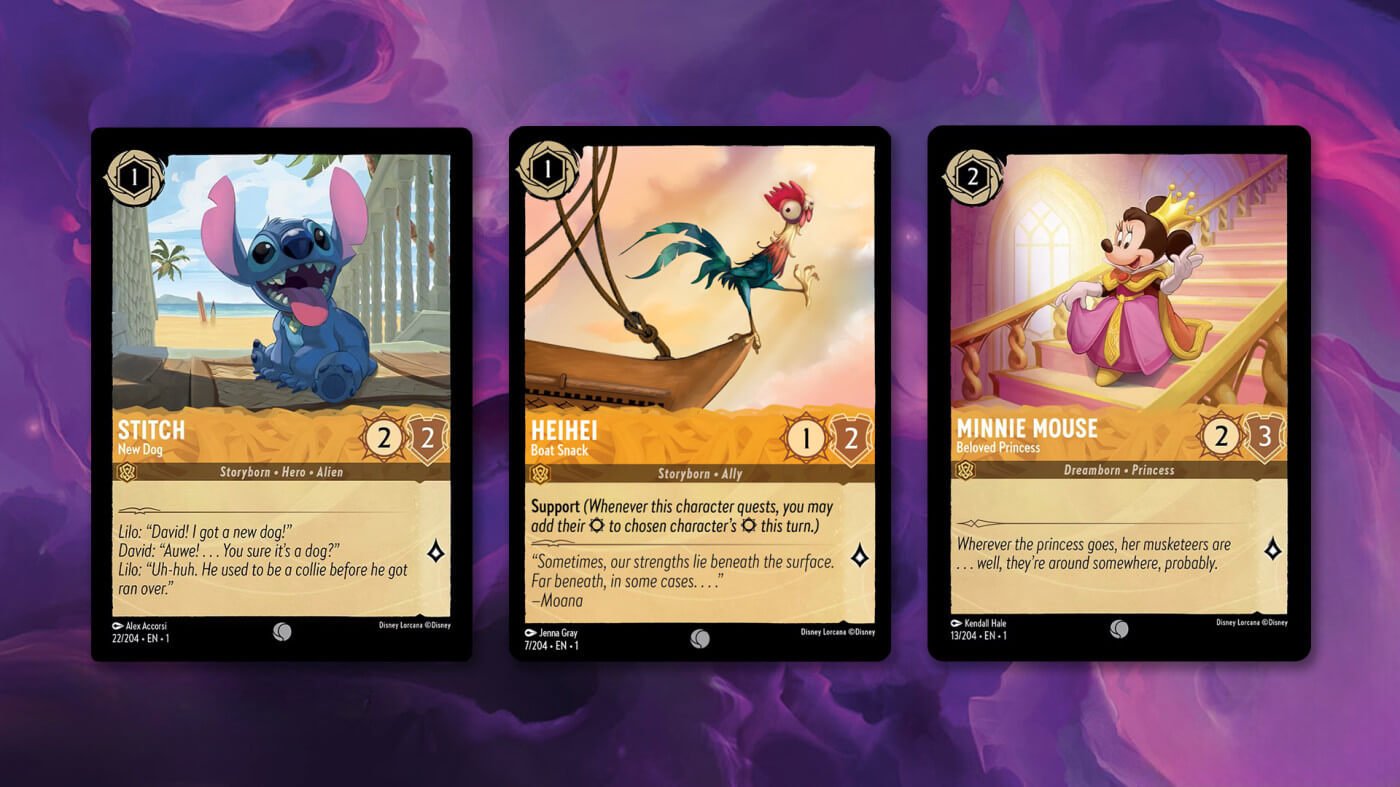
Actions: Played as a one-time use and grants the player whatever the card reads. Drawing cards, removing your opponent's characters, or buffing the attack value of one of your characters are just a few examples of what action cards bring to the table.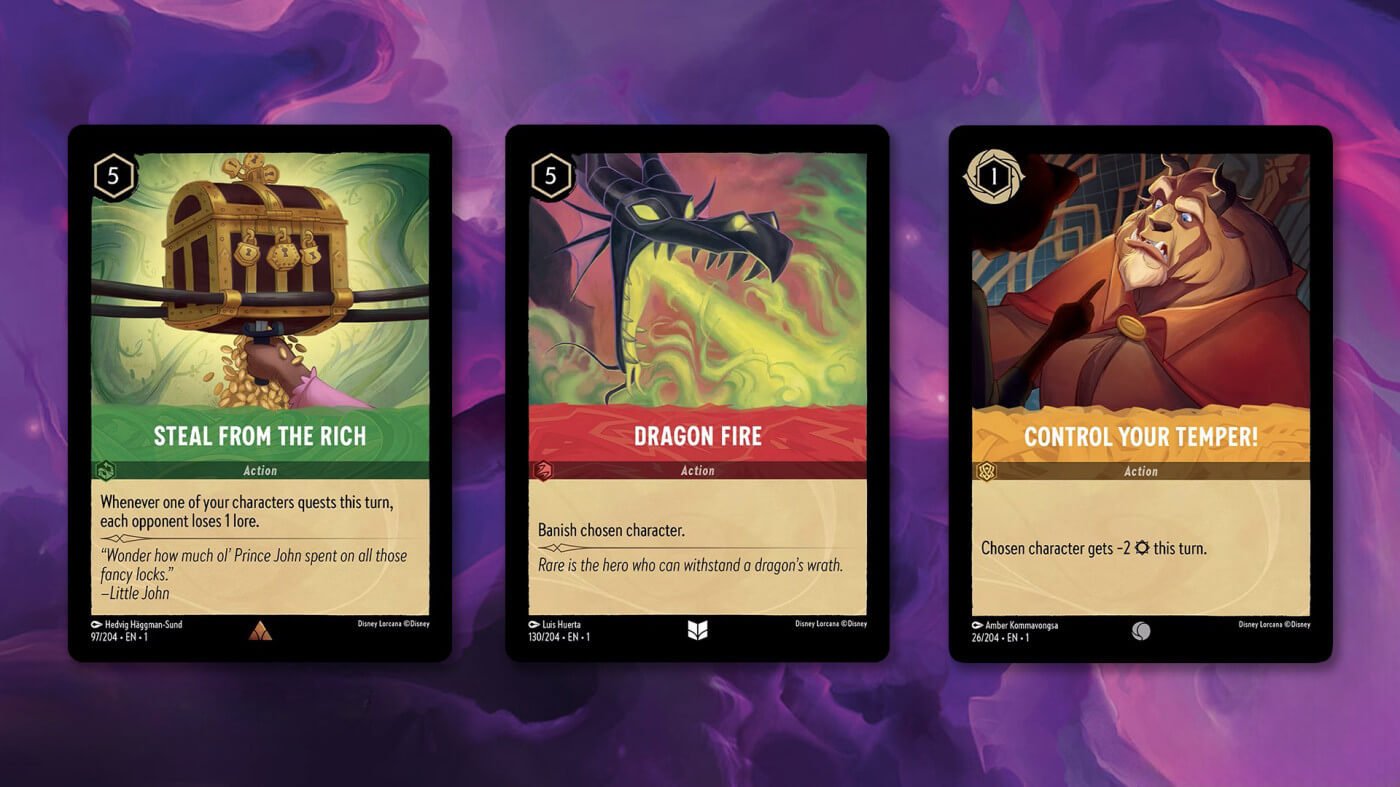
Songs: A subtype of action cards, but can be played by Exerting one of your characters (turning the character sideways) to pay the cost rather than spending your Inkwell resources. Having one of your characters sing the song and pay the cost of the action will free up your Inkwell resources for other cards.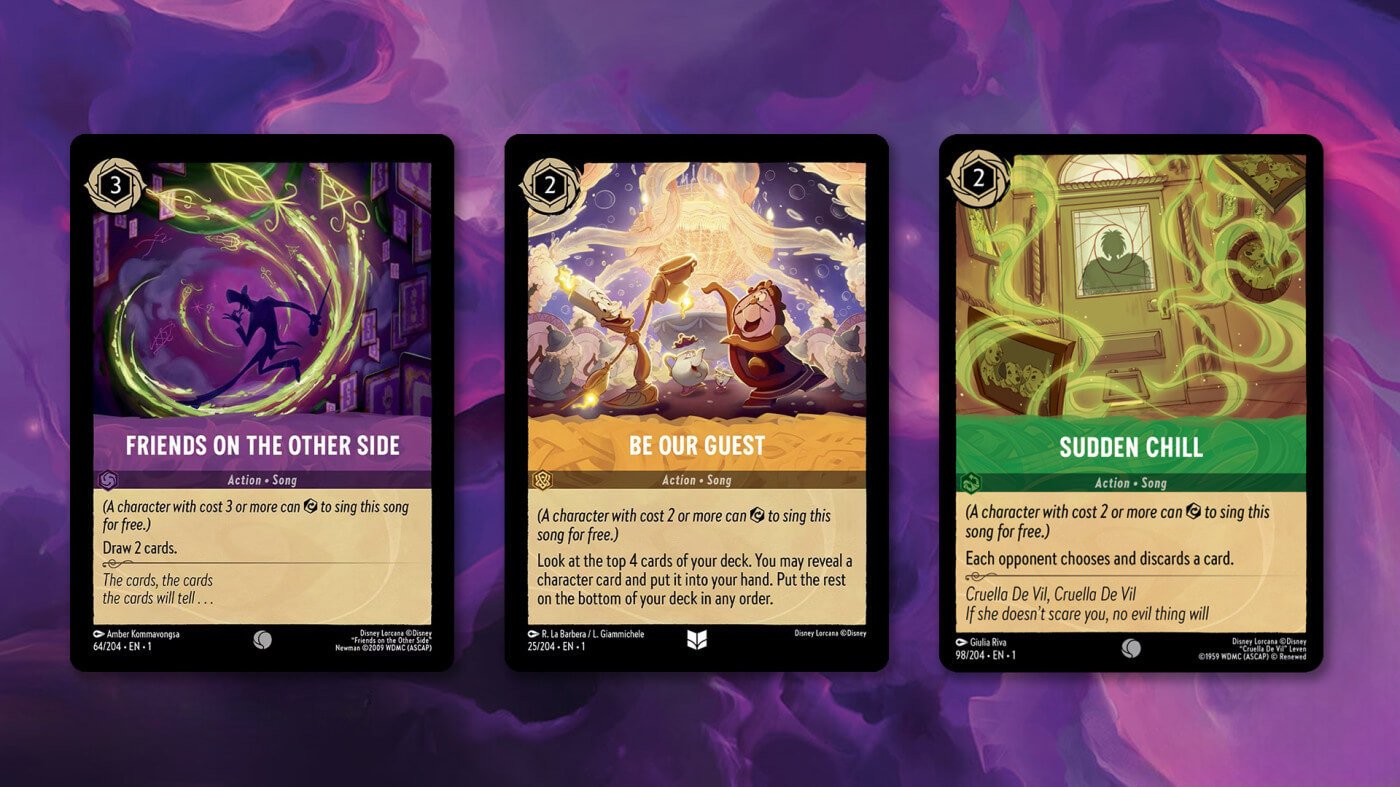
After resolving the card effect, all actions go directly to the Discard Pile, located just below your deck.
Items: These are permanents that stay on your side of the play area and can be utilized to benefit your characters' overall strategy. Once per turn, you can pay the associated cost to activate the item and reap its benefits.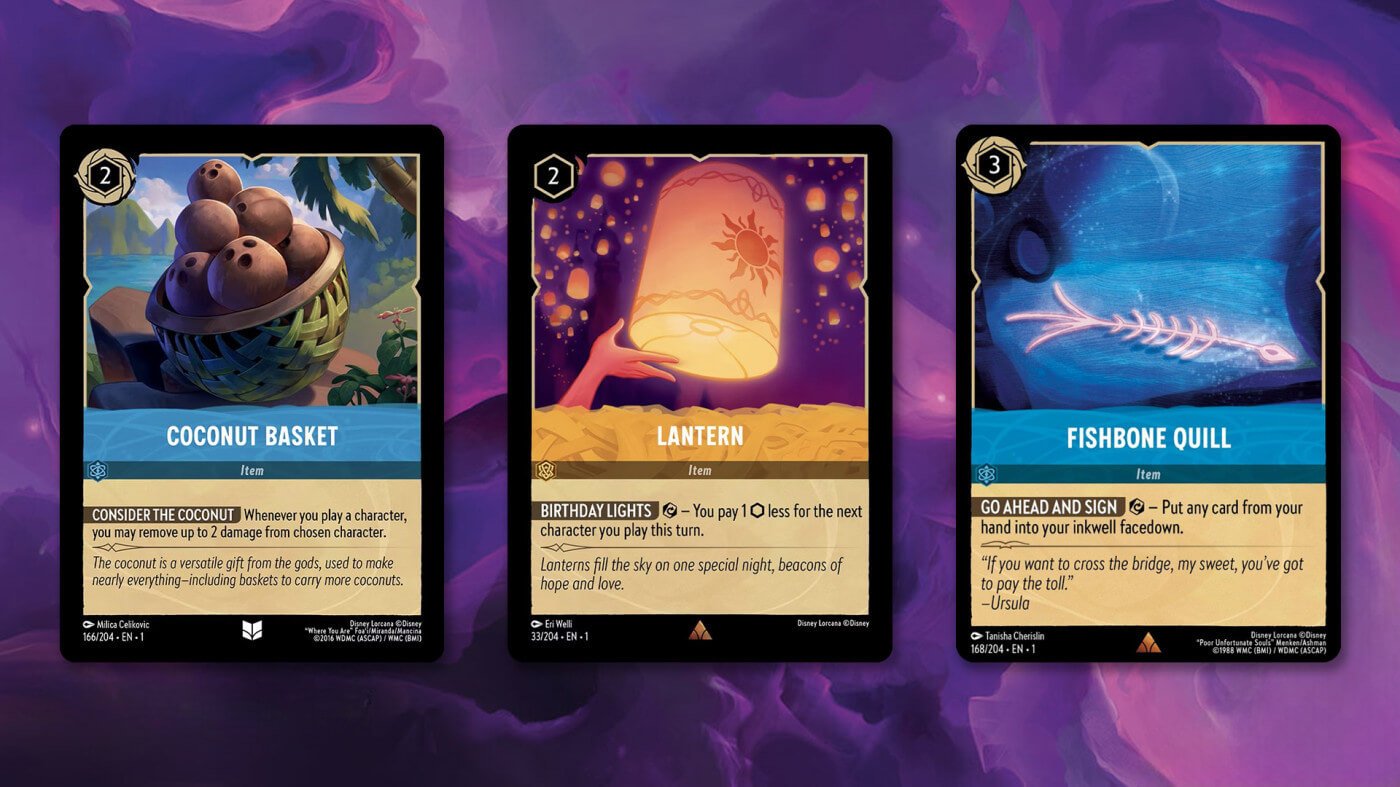
Rules Note: You can have no less than 60 cards in your deck and no more than 4 copies of each unique card. A unique card is one with the same name as another. For example, you can have up to 4 Aladdin, Street Rat and 4 Aladdin, Prince Ali. Both are Aladdin, but have different sub-names.
Card Anatomy
Cost: Located in the top left corner and surrounded by a Hexagon. This is the required amount of Ink that must be Exerted to play out the card. Many cards can be placed into your Inkwell and converted into Ink. Cards that can do this have a thick golden ring around the hexagon. Cards without the outer golden ring cannot be converted into Ink unless another ability allows it to be placed into your Inkwell.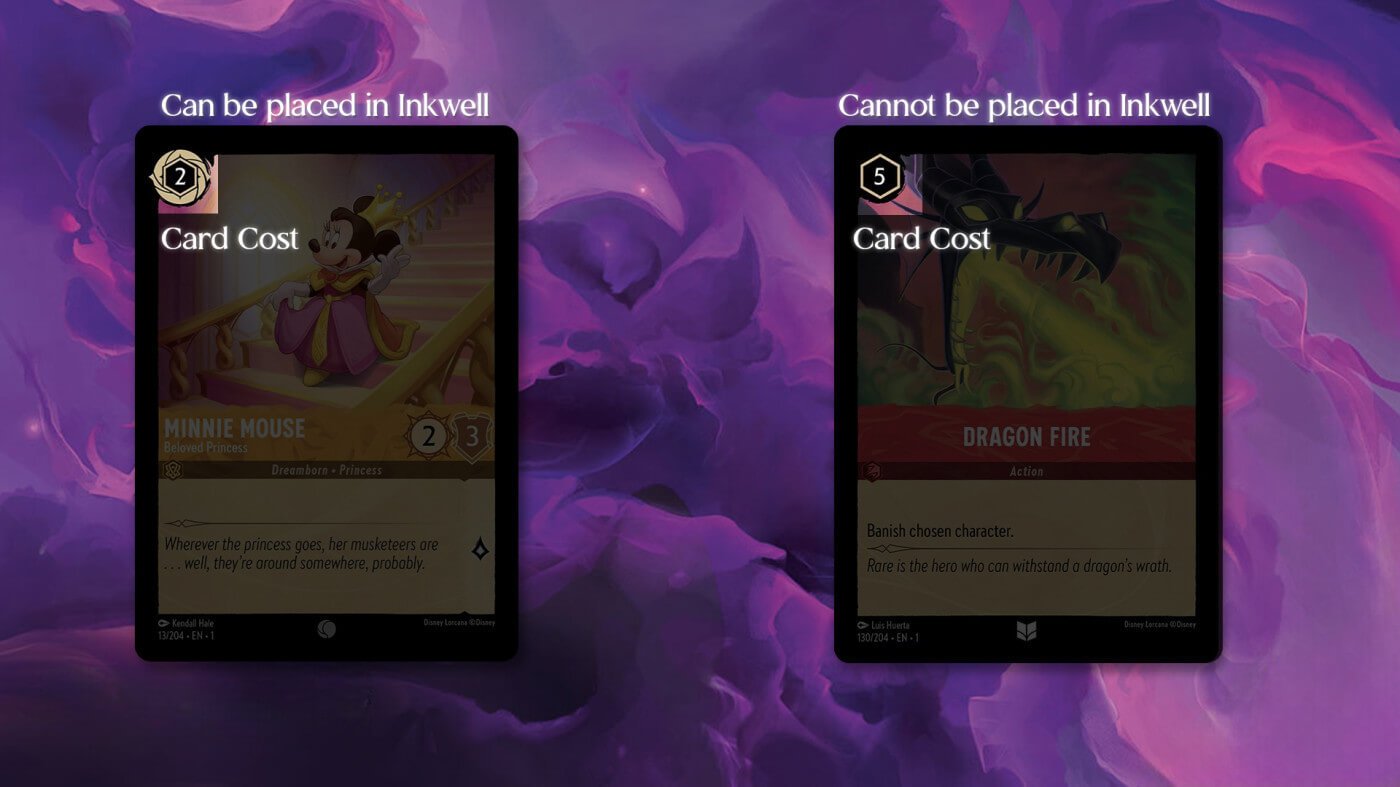
Strength & Willpower: Located on the middle right of all character cards, this is used when battling other characters. Strength is on the left, outlined in a spiky ring, and indicates the amount of damage it can deal. Beside it, your willpower is outlined in a shield and determines the amount of damage the character can receive before succumbing to its wounds and being placed in the Discard Pile. Characters become Exerted when challenging an opposing character.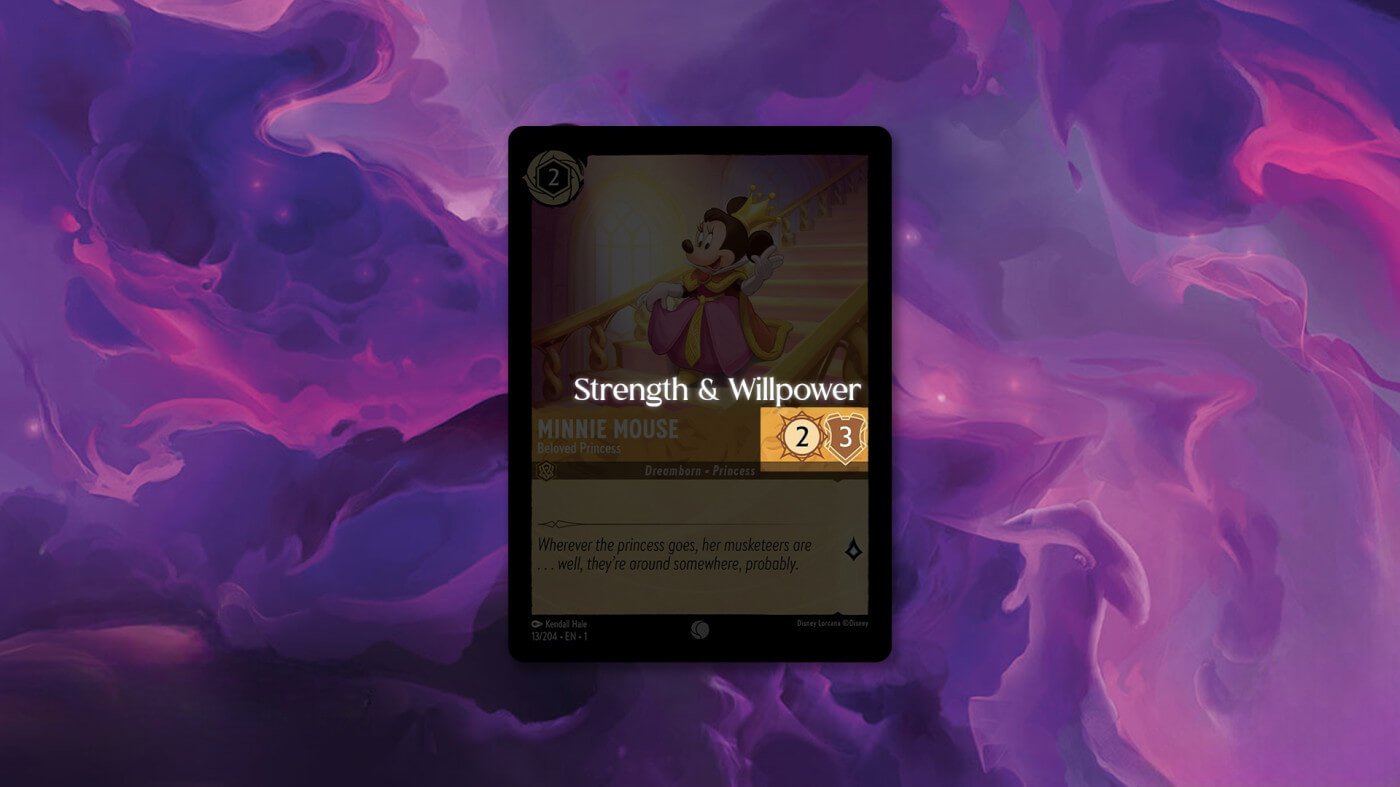
Many action cards or other characters can temporarily buff your friends on the battlefield or even remove damage counters from their injured companions. Any damage taken during a scuffle will remain on the character until it’s either healed or removed from play.
Classifications: All characters have a class and subtypes, which can be found directly below the character artwork. In Disney Lorcana: The First Chapter, there are a handful of cards that reference these for additional support and benefits.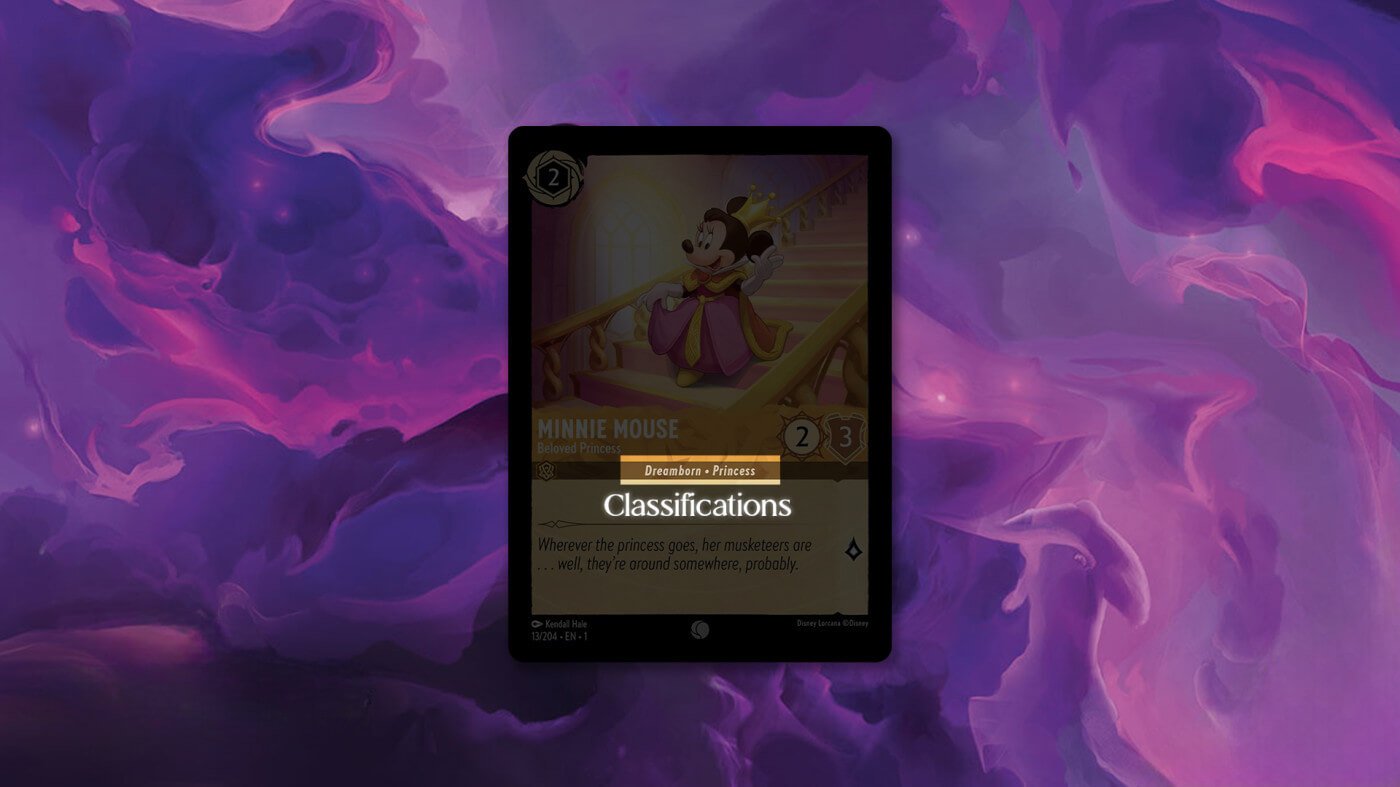
Ink Color: The main text box and center bar indicate the Ink color tied to the card and shouldn’t be hard to miss. For those with difficulty deciphering color differences, there’s a small Ink symbol on the far left to help out.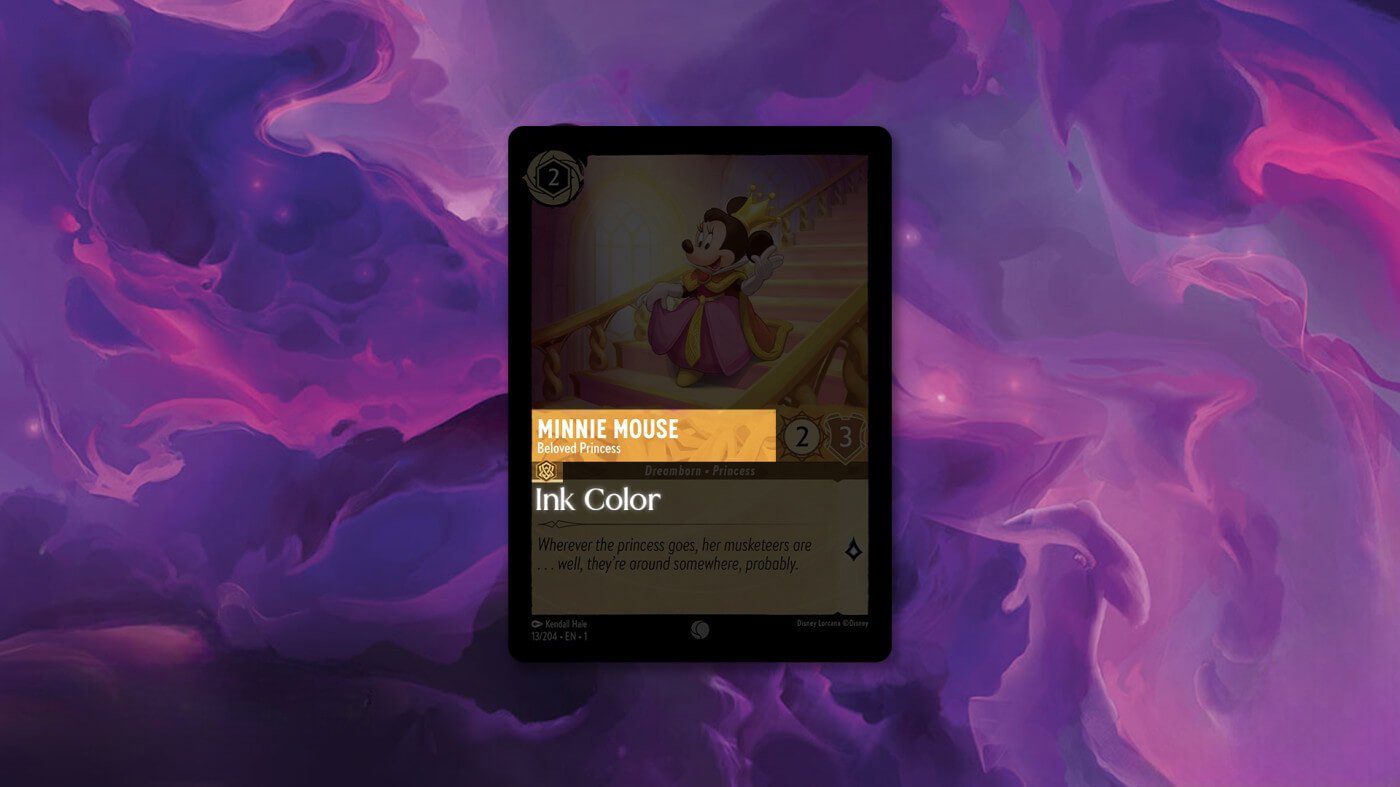
Card Abilities & Flavor Text: The main text box on any card. While not all characters have an ability or flavor text, this is the go-to place when looking for that information. Many characters activate their ability when Exerted, but some have activations when you play them.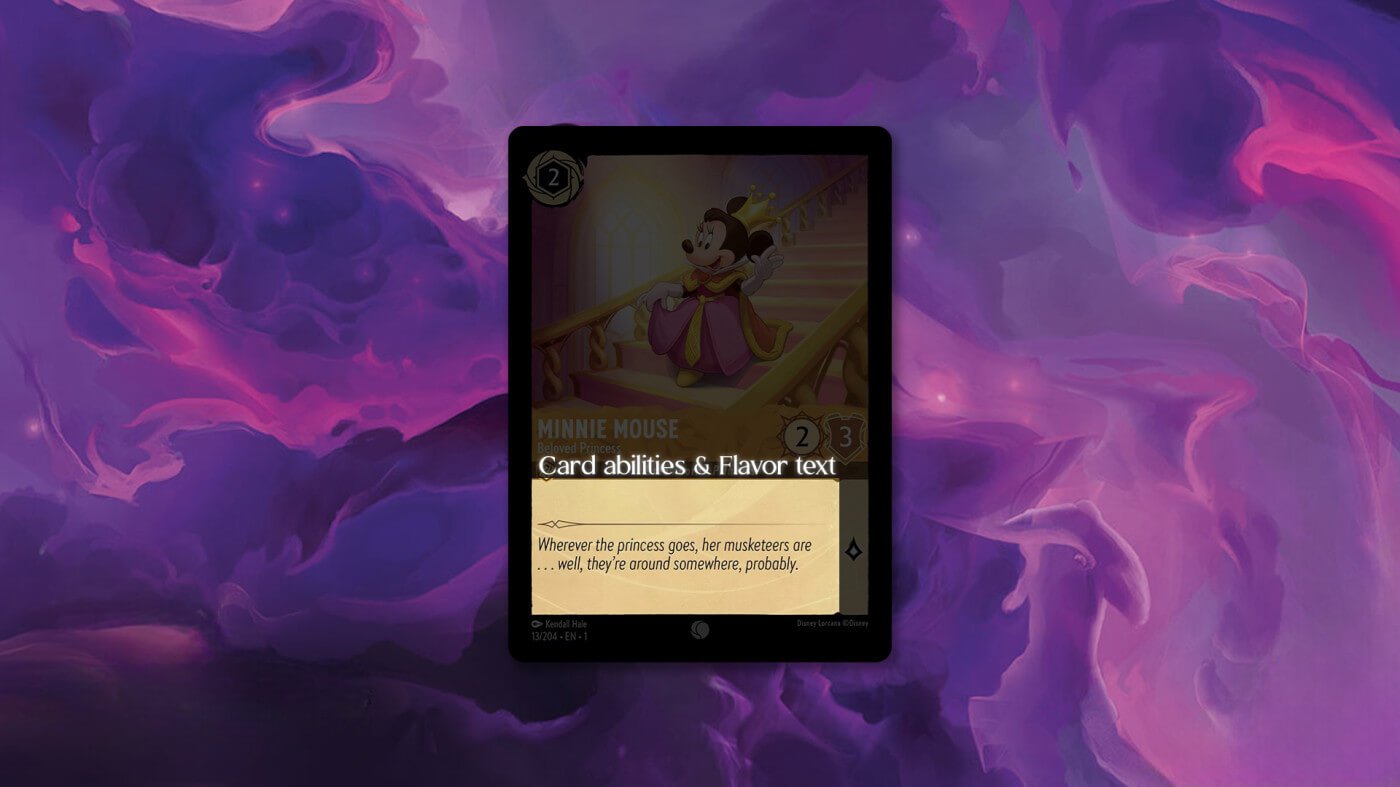
Lore Value: Located on the right side of the text box, this is the amount of Lore generated when you Quest. Characters become Exerted when Questing.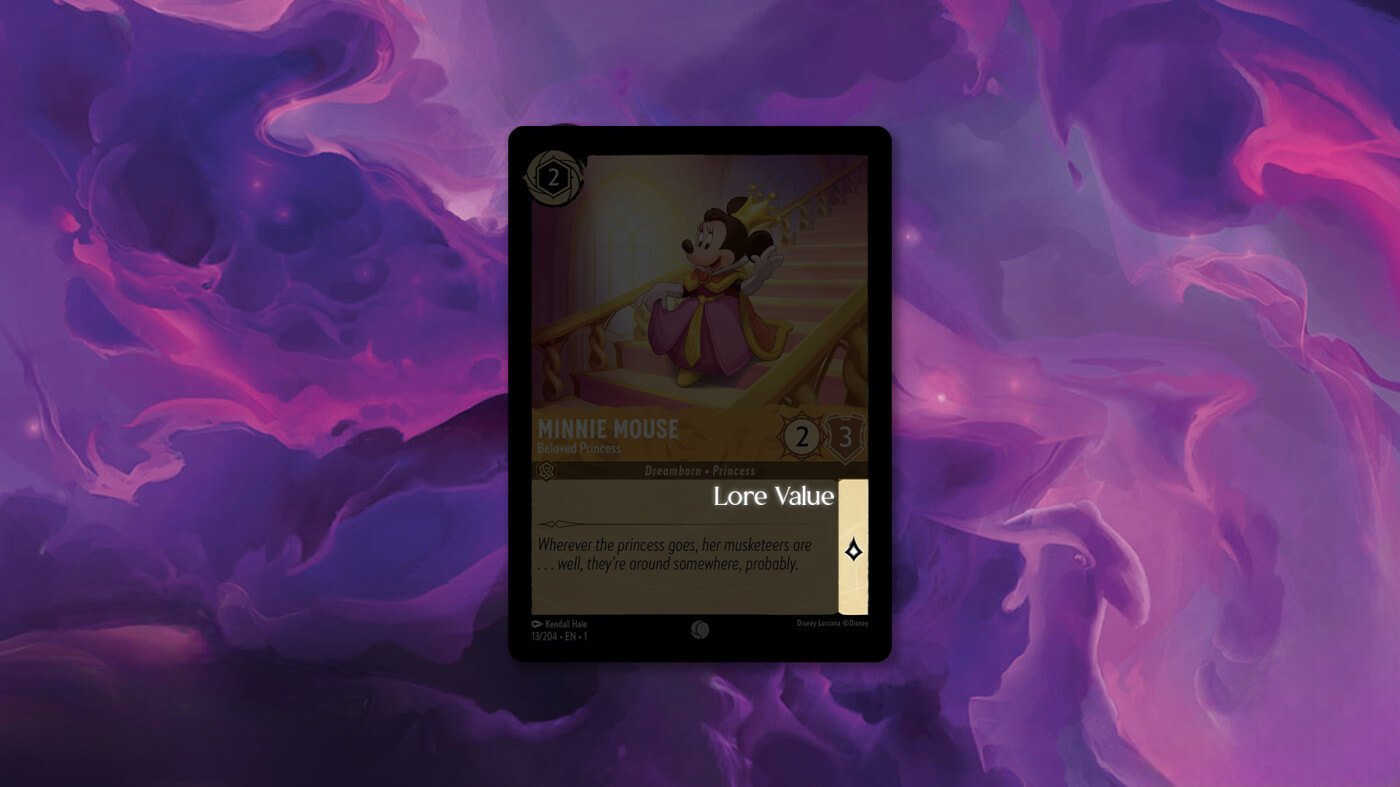
Now that we have the fundamentals down, let’s walk through the setup and the first turns of a Disney Lorcana match.
Gameplay Set Up
Once both players have chosen a deck of 60 cards and shuffled, it’s time to determine who goes first. In keeping with the light-hearted nature of the game, I suggest a friendly match of rock, paper, scissors. Each player draws 7 cards and decides which cards will be their starting hand and which cards they’d like to mulligan. If deciding to mulligan, the player will place the undesired cards to the bottom of the deck, then draw that many from the top. Shuffle the deck again, and it’s time to play!
Gameplay in Action
Starting Player (Me) -
Typically at the start of the turn, you must draw a card. But to create balance, I don't get to draw until the start of my next turn. Instead, I begin the turn by revealing a card capable of transforming into Ink (a hexagon with a golden ring around it) and then place it face down into my Inkwell. Then, I exert the Ink card to pay the cost of HeiHei: Boat Snack.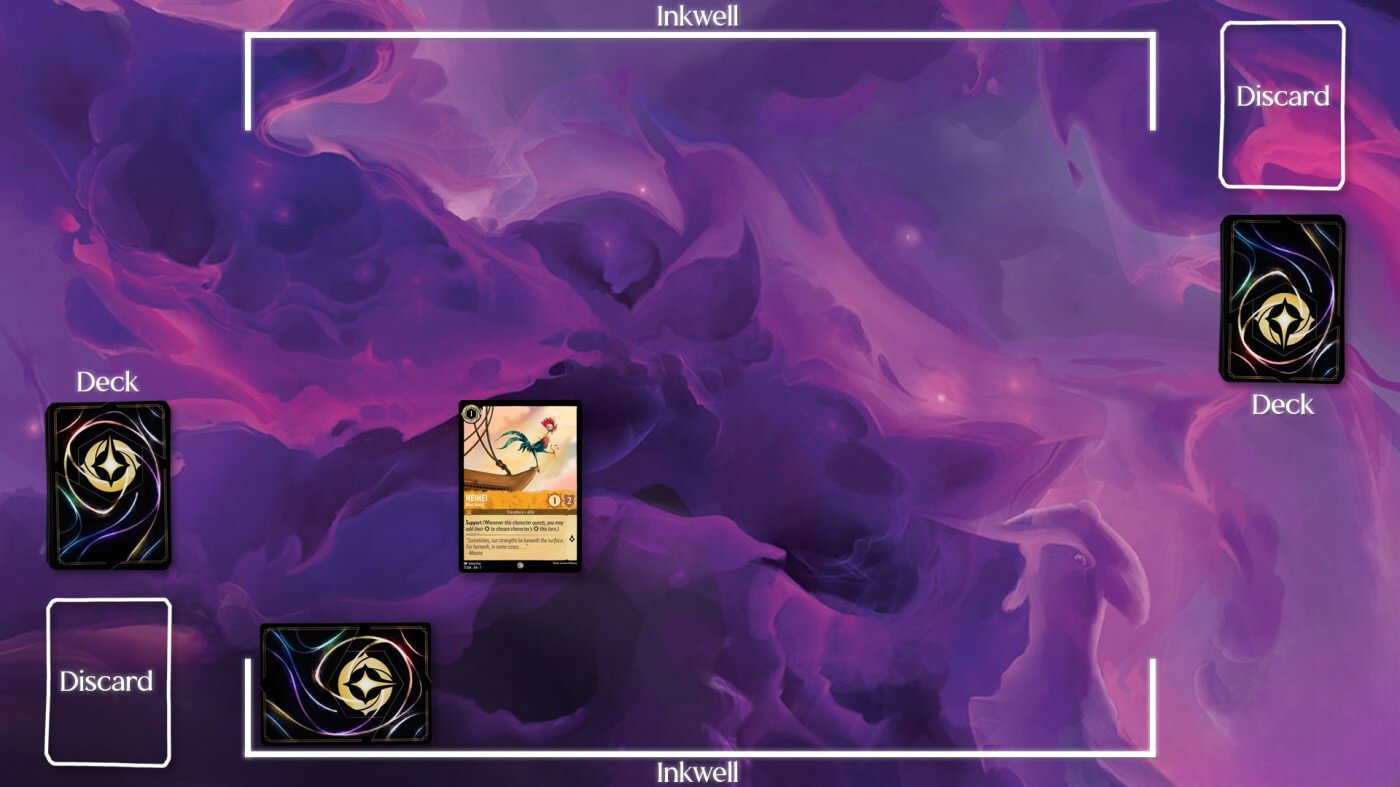
Characters cannot challenge or Quest on the same turn they were played because, thematically, their Ink needs to dry.
Since I have nothing further to do, I pass the turn to you.
Non-Starting Player (You) -
At the beginning of your turn you draw a card, then proceed to place a card into your Inkwell. You also decide to exert your Ink to play Stitch: New Dog. Again, your freshly placed character’s Ink isn’t dry, so you pass the turn to me.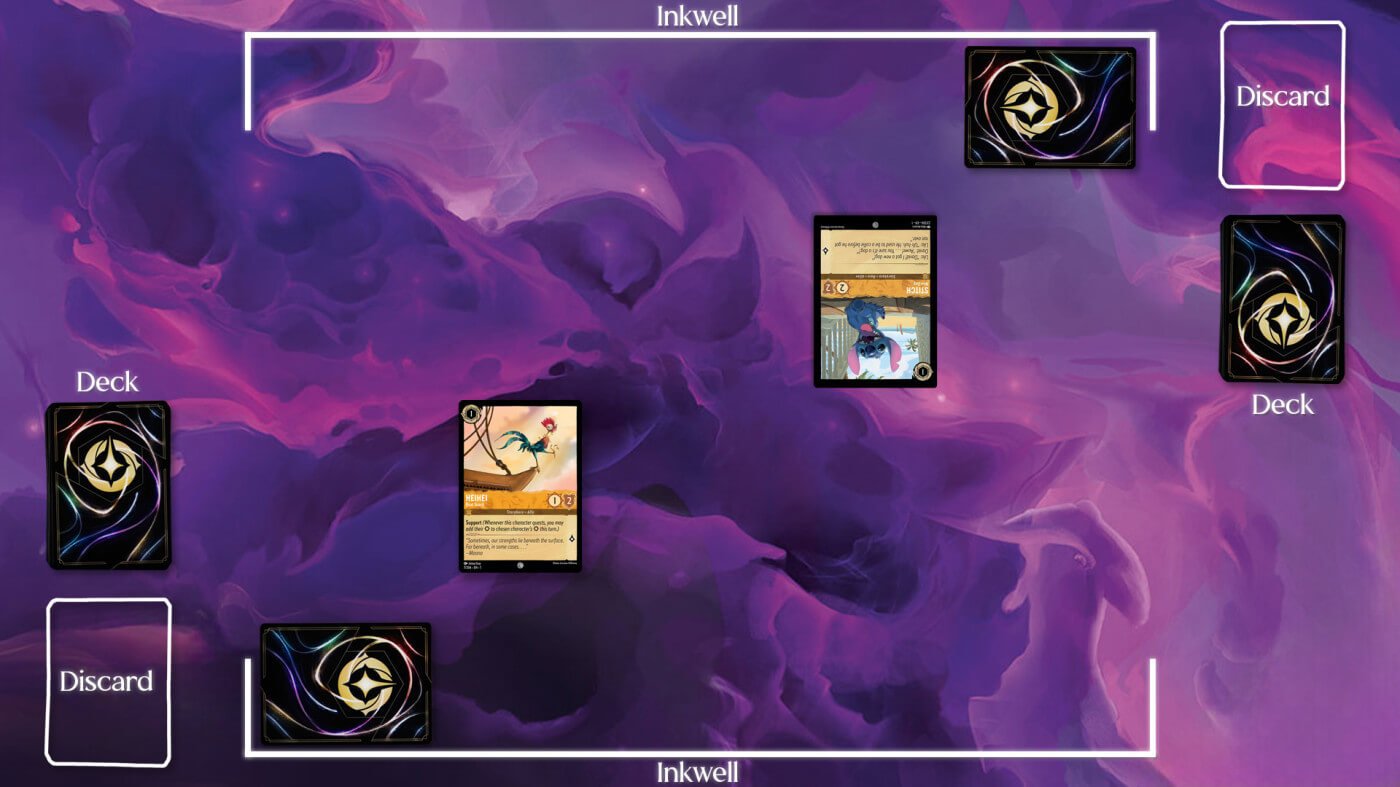
Questing
From here on out, you and I will observe the following steps at the start of our turn:
Ready: Any exerted cards are reset to the upright position. This includes characters, Items, and Inkwell cards.
Set: The player checks for any actions or abilities that take place at the start of their turn.
Draw: Lastly, they draw a card for their turn.
After placing another card into my Inkwell, I decide to play out a Minnie Mouse: Beloved Princess, exerting both of my Ink. Unable to perform actions with Minnie until her Ink dries, I turn my attention to HeiHei because it’s “Ink is now dry.”
HeiHei has two options - Challenge an opposing character or Quest.
You may only challenge an opposing exerted character, and since the only opposing character (Stitch) is upright, I decide to take this character on a Quest for Lore.
To quest, I simply exert HeiHei. In this example, HeiHei quests for 1 Lore point, bringing the Lore score to 1-0. Take note of its triggered ability called Support, which allows me to add HeiHei’s attack value to any character’s attack value when he Quests. Not able to challenge with Minnie this turn, I opt not to do this.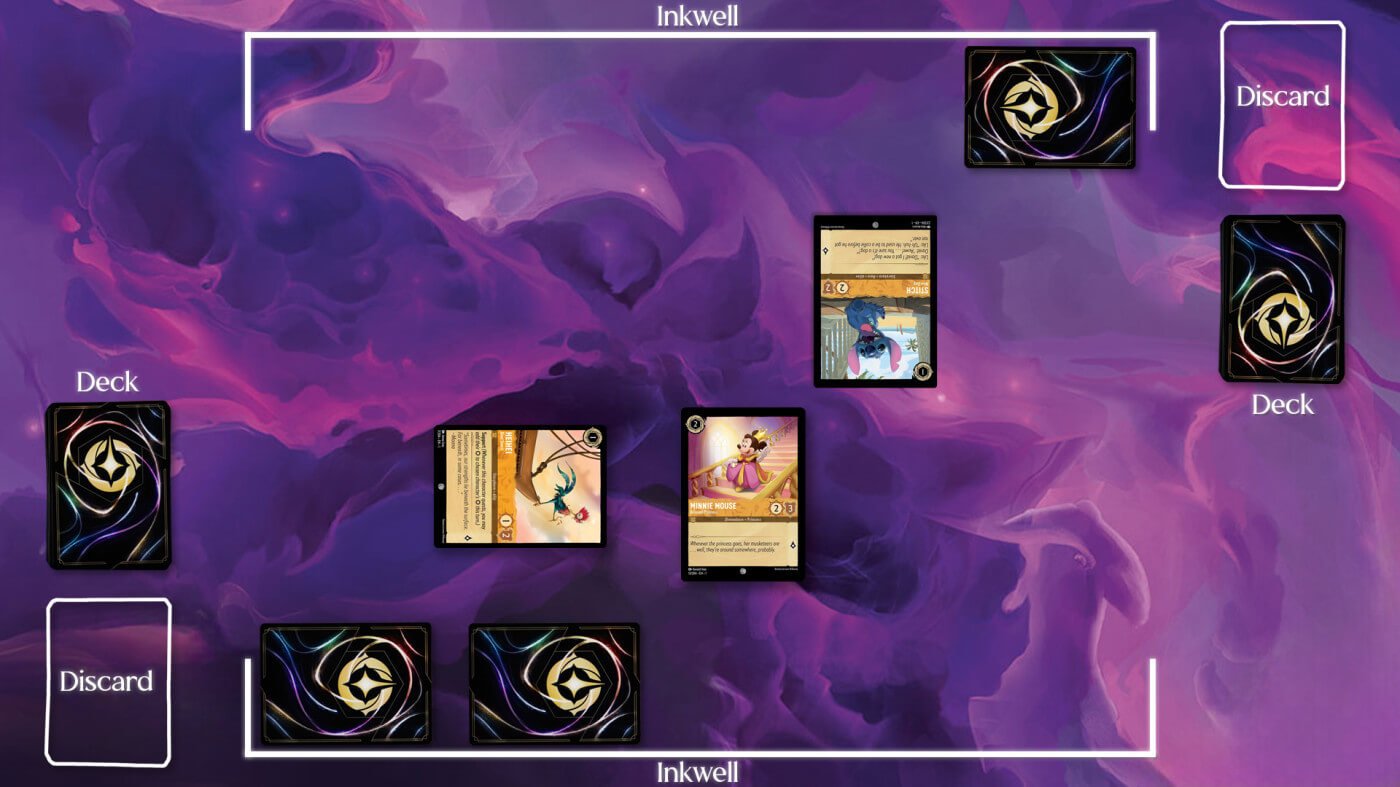
Having nothing else to do, I pass the turn to you.
Combat
Before anything, you observe the Read, Set, Draw steps. After that, you place another card into your Inkwell and exert two Inks to play out a Magic Broom: Bucket Brigade. Again, take note of the “on-play” triggered ability called Sweep, which allows you to shuffle any card from any discard pile into the player’s deck. Neither of us having cards in our discard pile, you opt not to do this.
Your Stitch is now ready to either challenge or Quest. You decide it’s best to slow me down and get rid of my exerted HeiHei by challenging it. To do so, you exert Stitch and announce the challenge.
In combat, both characters hit each other. This means your Strength number (2) will look to be greater than or equal to my Willpower (2) if you want to discard my character in one fell swoop. Likewise, my character is dealing damage to your character equal to its Strength number (1). In this scenario, Stitch successfully takes out HeiHei, sending him to my discard pile. On the other hand, HeiHei did 1 damage to Stich, thus resulting in you having to place a -1 Willpower counter on him. This means that a single point of damage can take Stitch out of the game, so be careful!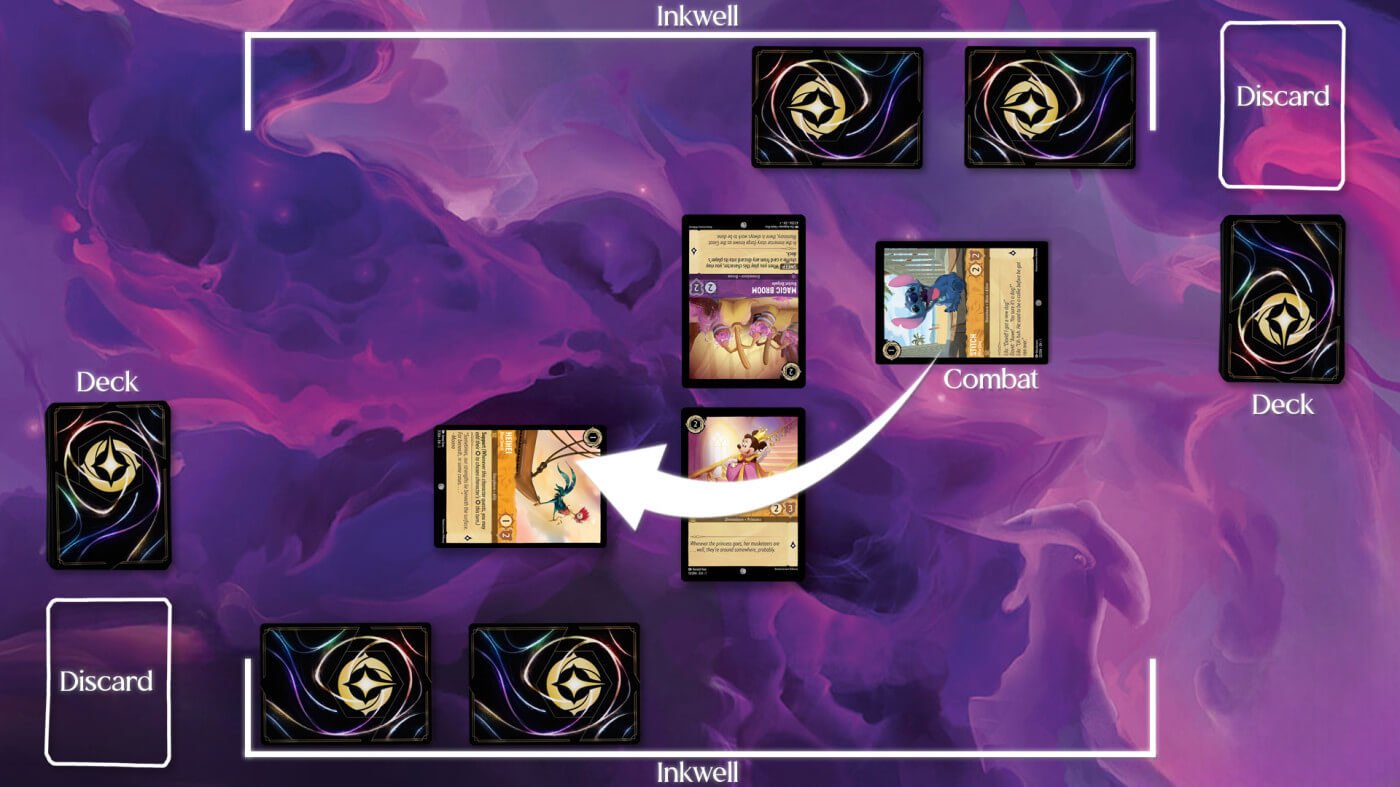
After the challenge, you end your turn, and it’s back to me.
Knowing when to Quest and when to challenge makes this back-and-forth continue until one player ultimately reaches the winning score of 20 Lore points.
A Whole New World
That wraps up the basics and should be enough to get you questing yourself! The best place to start is with one of the three available pre-constructed decks that Ravensburger carefully crafted with newcomers in mind.
Disney Lorcana also has a free companion app that can walk you through a few more gameplay steps, as well as a digital Lore counter, which helps simplify keeping track of each other's points.



